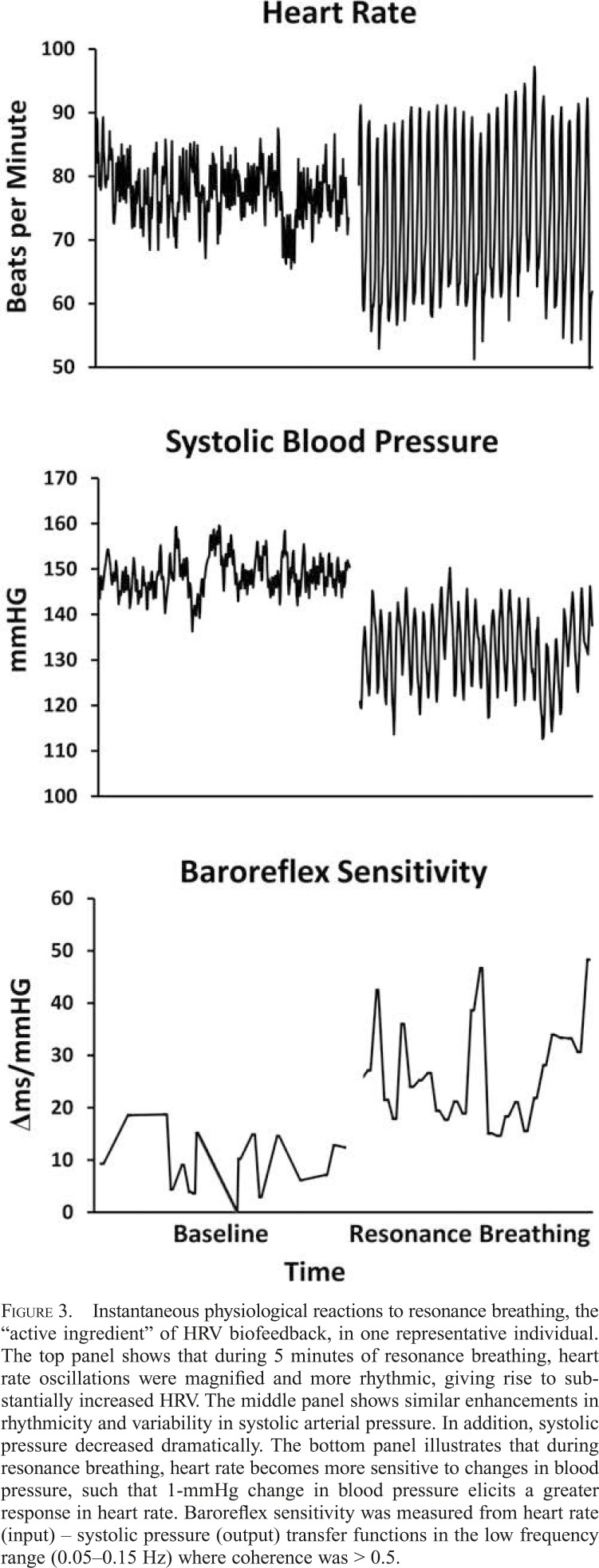Figure 3.
Instantaneous physiological reactions to resonance breathing, the “active ingredient” of HRV biofeedback, in one representative individual. The top panel shows that during 5 minutes of resonance breathing, heart rate oscillations were magnified and more rhythmic, giving rise to substantially increased HRV. The middle panel shows similar enhancements in rhythmicity and variability in systolic arterial pressure. In addition, systolic pressure decreased dramatically. The bottom panel illustrates that during resonance breathing, heart rate becomes more sensitive to changes in blood pressure, such that 1-mmHg change in blood pressure elicits a greater response in heart rate. Baroreflex sensitivity was measured from heart rate (input) – systolic pressure (output) transfer functions in the low frequency range (0.05–0.15 Hz) where coherence was > 0.5.

